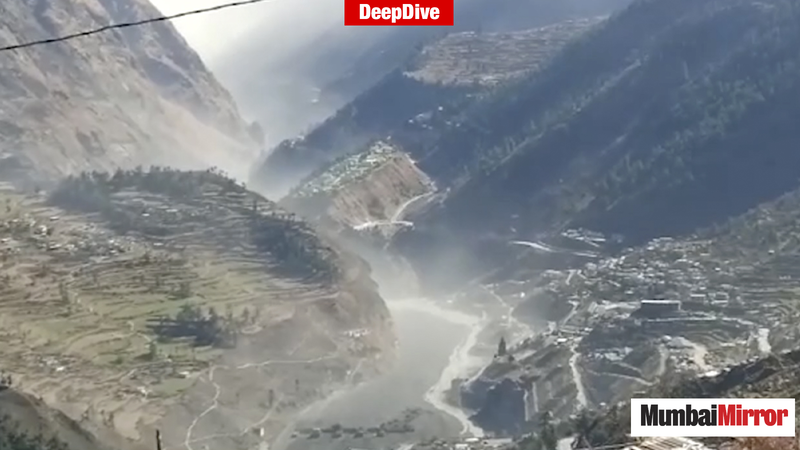We have learnt nothing from 2013 Uttarakhand disaster

- Nivedita Khandekar
- Updated: Apr 3, 2022, 23:41 IST IST
It is not for the first time that the area is witnessing such a natural disaster. It is also not the first time that the government has allowed dam projects in the fragile Himalayan ecology
It has been more than 48 hours, but the villagers of Raini are still reeling from effects of the loud crashing sound that was followed by an almost deafening roar of the river, as it bolstered down the narrow gorge on February 7. From the cluster of glaciers of the Nanda Devi massif, a hefty chunk got detached and was swept down the Rishiganga gorge towards the base of Nanda Devi Biosphere Reserve, and it took less than ten seconds for the flash flood to completely submerge the dam structure of the Rishiganga hydropower project, blasting it into smithereens.
On Monday, two teams, one from Snow and Avalanche Study Establishment (SASE) and the other from Wadia Institute of Himalayan Geology, Dehradun managed to get close to the site, but so far accessing the snout of the glacier to ascertain the exact reason of the accident has been difficult. Freezing temperatures, high altitude, which can cause breathing issues, and almost inaccessible snow-covered locations make it impossible to reach the site. This is also one of the chief reasons why we know so little about our glaciers, even though we have 9,500 of them, which are more than 10 sq km in length, spread across the length of the Indian Himalayas.
On Monday, two teams, one from Snow and Avalanche Study Establishment (SASE) and the other from Wadia Institute of Himalayan Geology, Dehradun managed to get close to the site, but so far accessing the snout of the glacier to ascertain the exact reason of the accident has been difficult. Freezing temperatures, high altitude, which can cause breathing issues, and almost inaccessible snow-covered locations make it impossible to reach the site. This is also one of the chief reasons why we know so little about our glaciers, even though we have 9,500 of them, which are more than 10 sq km in length, spread across the length of the Indian Himalayas.
